Good Night everyone for all of our friends who are at Blurtter and have been joining Blurtter for a long time, hopefully we are always healthy and can always carry out activities as usual. So on this occasion I want to write a little bit about Cereal Leaf Beetle | Photography | Macro hopefully later it can become a memory for myself, and for other friends who are already married, don't forget to also give directions and input if later in my writing there are still words- words that are not polite, therefore I apologize once again.
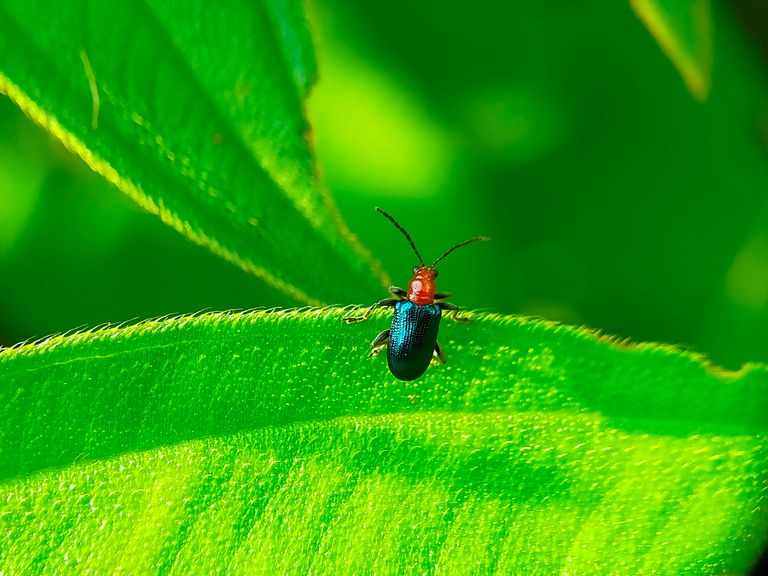
There are so many types of beetles that live in this world, but we don't know where they are, but on this occasion I will write a little about some of the beetles in the picture below. Insects of the beetle family Chrysomelidae commonly known as leaf beetles, are among the largest and most commonly encountered of all the beetle families. Many subfamilies are recognized, but the precise taxonomy and systematics are likely to change with ongoing research. Leaf beetles are partially identifiable by their tarsal formula, which looks like 4-4-4, but is actually 5-5-5 because the fourth tarsal segment is very small and hidden by the third tarsal segment. Like many other taxa, there is no single character that defines Chrysomelidae; instead, the family is described by a set of characters. Some lineages are only difficult to distinguish from longhorn beetles (family Cerambycidae), namely by the antennae that do not emerge from the frontal tubercles. Leaf beetle adults and larvae feed on all types of plant tissue, and all species are completely herbivorous. Many serious pests of cultivated plants, for example the Colorado potato beetle (Leptinotarsa decemlineata), the asparagus beetle (Crioceris asparagi), the cereal leaf beetle (Oulema melanopus), the mustard beetle (Phaedon cochleariae) and various aphid beetles, and a few act as vectors of plant diseases. Others are beneficial because of their use in invasive weed biocontrol. Some Chrysomelidae are strikingly colored, usually a glossy yellow to red or metallic blue-green, and some (notably the Cassidinae) are very oddly shaped. As such, they are very popular among insect collectors.
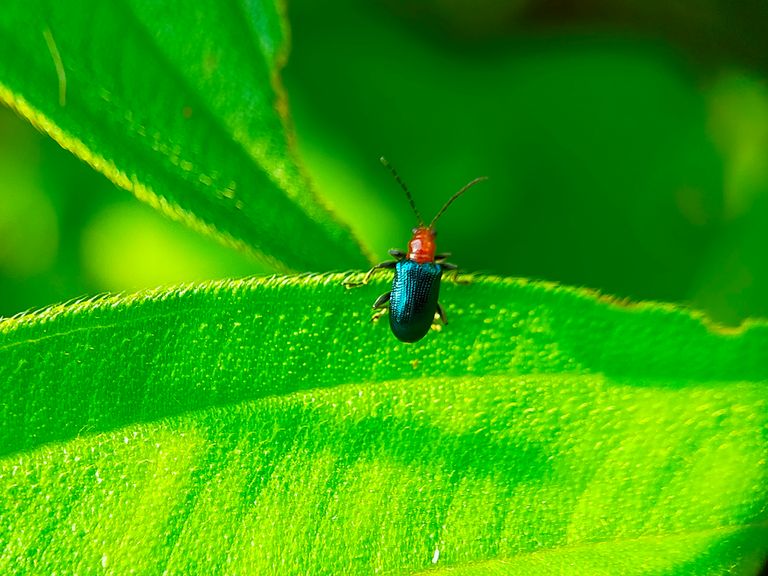
Leaf beetle adults are small to medium in size, i.e. most species are 1.0 to 18 mm long, excluding appendages, with only a few larger species such as Alurnus humeralis, which reaches 35 mm. The bodies of most species are domed, and oblong dorsally in view (although some are rounded or elongated), and often have a metallic sheen or a double coloration. In most specimens, the antennae are shorter than the head, thorax and abdomen, i.e. no more than half their combined length. The second antennal segment is of normal size (which distinguishes the beatle leaf from the closely related longhorn beetle). In most species the antennal segments are more or less the same shape, at most gradually widening towards the apex, although some Galerucinae in particular have modified segments, especially in males. The first antenna segment is in most cases larger than the next. The leaf beetle pronotum varies between species. For the most part, the dome is slightly to very high and trapezoidal to rounded-square in dorsal view. In some subfamilies such as Cassidinae and to a lesser extent Cryptocephalinae, the head is covered by the pronotum so that it is not visible from above. The first three sternites are not fused, but are connected by a movable suture. Most species have wings, although the degree of development and ability to fly varies widely within a single species, and some are flightless with fused elytra.
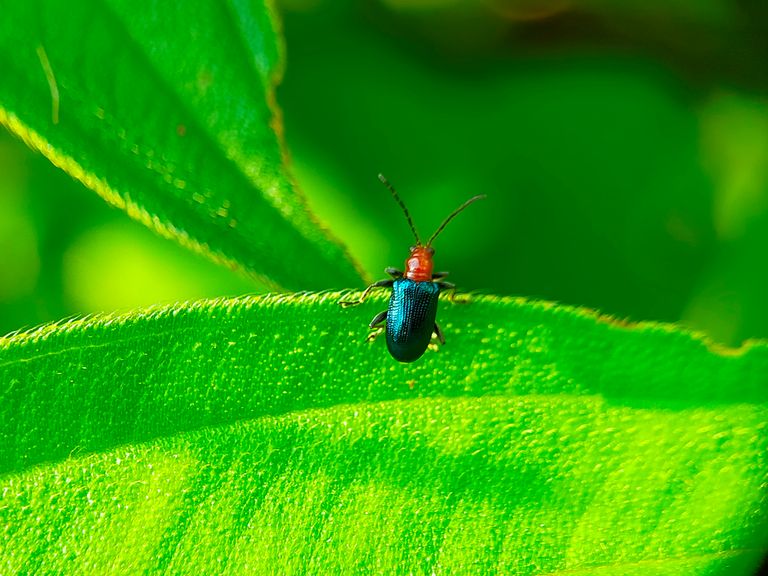
This study aims to study the natural enemies of leaf beetles on eggplant and leunca plants, the most preferred instars of leaf beetle parasitoids on eggplant and leunca plants, as well as the ability of parasitoids to parasitize on dominant leaf beetle larvae. The experiment was carried out at the Balitsa Lembang experimental garden which is located at an altitude of ± 1250 m above sea level. Soil type is andosol pH 4.5-5.5. Based on the type of rainfall according to data from Balitsa Agroclimatology in Lembang, it is included in the climate type B (wet) according to the classification of Schmidt and Ferguson (1951). This experiment used a randomized block design (RBD), which consisted of four treatments and repeated six times, on leaf beetle larvae that prefer parasitoids. As a treatment, each instar larva consisted of A (1st Instar Larvae), B (2nd Instar Larvae), C (3rd Instar Larvae), D (4th Instar Larvae). As for the treatment of leaf beetle larvae mortality that was attacked by parasitoids and the intensity of larvae attack each consisted of six treatments and repeated four times. As a treatment, each number of larvae consisted of A (5 heads), B (10 heads), C (15 heads), D (20 heads), E (25 heads), F (30 heads). The results of this study showed that fourth instar larvae displayed a higher number of parasitoids than other treatments on eggplant and leunca plants. While the percentage of larval mortality in these two types of plants in the treatment of 30 larvae gave a higher mortality percentage than 5, 10 and 15 larvae. The highest percentage of attack intensity (68.25%) occurred in instar IV larvae on eggplant plants, and (48.28%) included mild attacks on leunca.
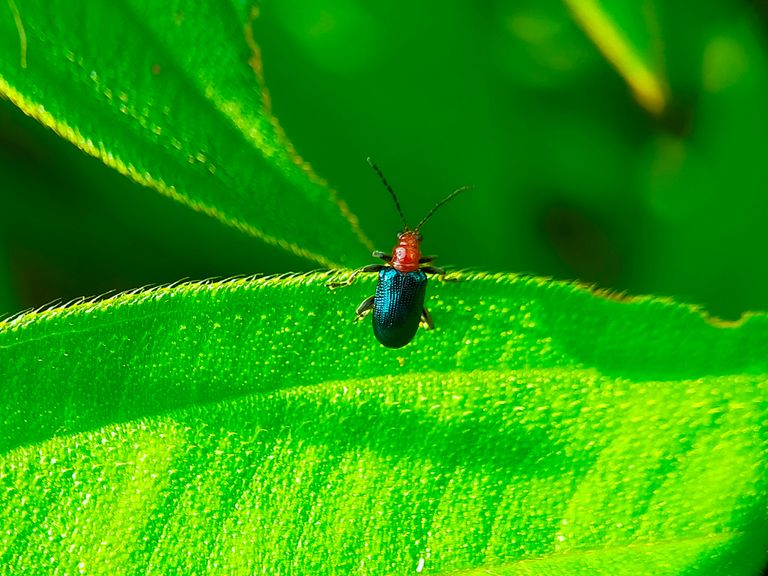
Beetles are a group of insects that make up the order Coleoptera /koʊliːˈɒptərə/. The word "coleoptera" comes from the Ancient Greek κολεός, koleos, and πτερόν, pteron, which together mean "sheathed-wing", since most beetles have two pairs of wings. The pair of wings at the front are called elytra. This wing pair hardens and thickens which can protect the wing pair behind it and also protect the back of the body of the beetle. The order Coleoptera has more species than any other order, covering nearly 25% of all known types of animal life forms. About forty percent of all described insect species are beetles (about 400,000 species) and new species are frequently discovered. The largest taxonomic family, Curculionidae, also belongs to this order. The spread of beetles is very wide. Beetles can be found in all major habitats, except in the oceans and polar regions. They interact with their ecosystem in various ways. Several species of beetles are detritus producers, by breaking down dead animal and plant tissues, feeding on the carcasses of certain types, and eating garbage. Some species eat mushrooms. Some species are flower and fruit eaters. There are also species that are parasites or parasitoids. Several other species are predators or predators of other invertebrates. Many species of these predatory beetles are important as agricultural pest controllers. For example, beetles in the Coccinellidae family which prey on aphids, scale insects, thrips, and other plant-sucking insects that can cause damage to crop yields.
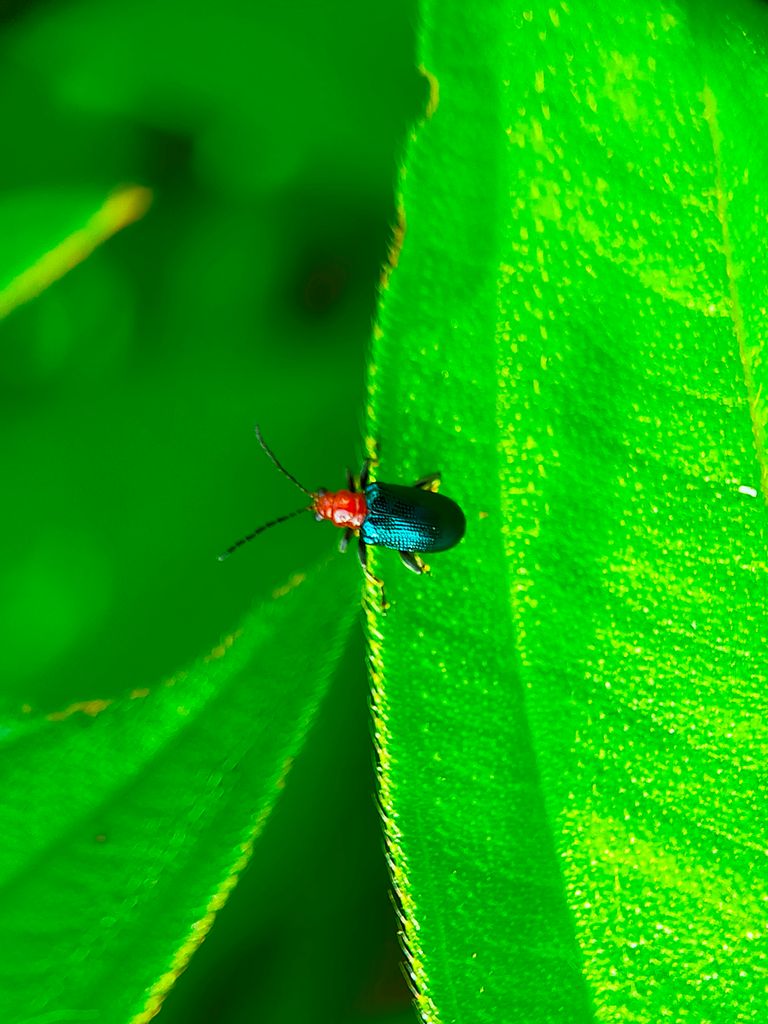
In contrast, some species of beetles are prey for a variety of invertebrate and vertebrate animals, including insects, fish, reptiles, birds and mammals. Beetles are generally not a serious pest, but they include agricultural and industrial pests, such as the Colorado potato beetle Leptinotarsa decemlineata, the cotton beetle Anthonomus grandis, the red flour beetle Tribolium castaneum, and the cowpea beetle Callosobruchus maculatus. This includes the death-watch beetle, whose larvae can cause serious damage to buildings by eating away at wood. Species in the order Coleoptera are generally characterized by the presence of an exoskeleton and hard forewings (elytra). These elytra distinguish beetles from most other insect species, except for a few species of Hemiptera. The beetle's exoskeleton consists of many plates called sclerites, separated by thin sutures. This design creates beetle defense while maintaining flexibility. The general anatomy of beetles is fairly uniform, although certain organs and appendages can vary widely in appearance and function among the many families in this order. Like all insects, the beetle's body is divided into three parts: head, thorax (thorax), and abdomen (abdomen).
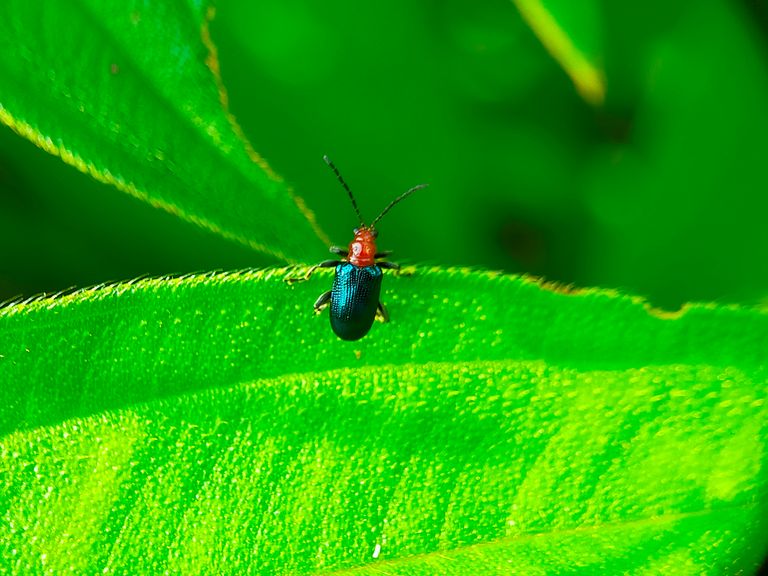
The heads are usually highly ossified (due to sclerotin formation) and vary in size. On the head there is a mouth that points forward or sometimes rotates downward. The eyes of beetles are compound and may display extraordinary adaptability, as in the case of top beetles (family Gyrinidae), their eyes are separated to allow a view above and below the surface of the water. Other species are also able to carry out vision apart between the eyes, including some longhorn beetles (family Cerambycidae) and weevils, and many other species have eyes that are notched to several degrees. Several genera of beetles also have ocelli, which are small simple eyes that are usually located far back on the head (at the vertices). The beetle's antennae are primarily olfactory organs, but they can also be used to physically sense their surroundings. In some families, the antennae may also be used for mating, or as defense for some types of beetles. In Coleoptera, the shape of the antennae varies widely, but they are often similar within families. In some cases, the male and female antennae of the same species may differ in shape. The antennae of beetles vary in shape: they may be thicker at the tip than at the base, threadlike, bent at sharp angles, like strands of beads, comb-like, or serrated.
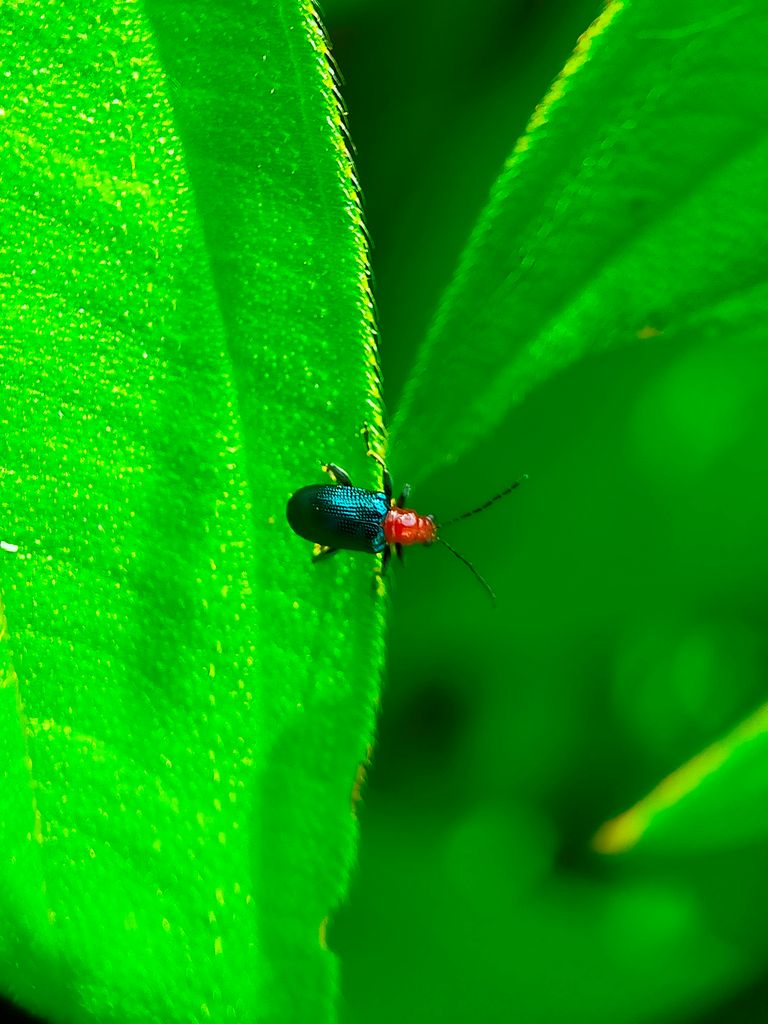
Beetles have the same mouth parts as grasshoppers. Of the mouthparts, the most commonly known are probably the mandibles (jaws), which look like large pincers on the front of some beetles. The mandibles are structures that often resemble teeth and are tough for attracting, crushing, or cutting food or enemies. Two pairs of finger-like appendages, the maxillary and labial palps, present around the mouth in most beetles, are used for inserting food into the mouth. In many species, the male mandibles are larger than the female mandibles of the same species. The chest (thorax) is divided into two visible parts, namely the front chest (prothorax) and the pteratorax. The ptatorax is a combination of the middle thorax (mesothorax) and hind thorax (metatorax), which are generally separate in other insect species, although they are flexibly connected to the thorax. When viewed from below, the chest is the part where there are three pairs of legs and two pairs of wings. The belly (abdomen) is everything behind the chest.[2] When viewed from above, most beetles appear to have three distinct parts, but this can be deceiving. On the beetle's upper surface, the central "section" is a hard coating called the pronotum, which is really just the front of the chest; while the back of the chest is hidden by beetle wings.
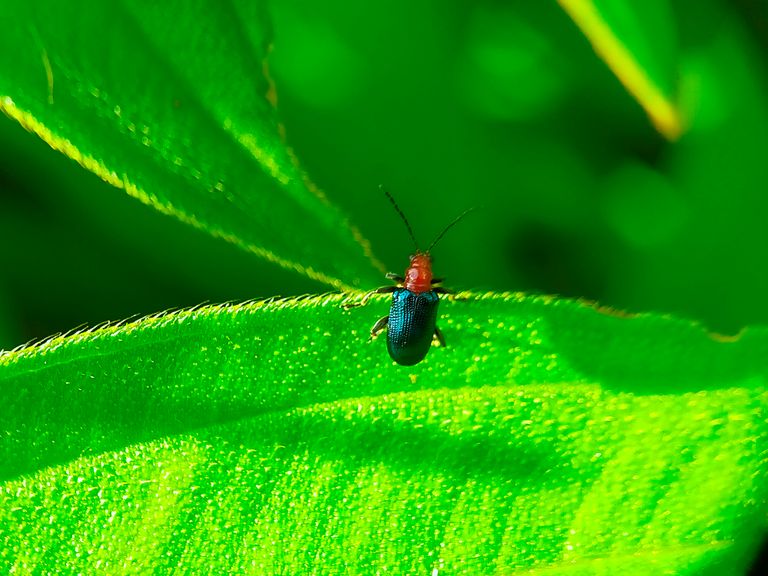
The many-segmented legs of beetles usually end in two or five small segments called tarsi. Like many other orders of insects, beetles have claws, usually a pair, at the end of the last tarsal segment of each leg. While most beetles use their legs for walking, for some others the legs are modified and adapted for a variety of other uses. In the aquatic families – Dytiscidae, Haliplidae, many species of Hydrophilidae and others- the legs, particularly the last pair, are adapted for swimming and often have many long hairs to aid this purpose. Other beetles have broad fossorial legs that rotate frequently to dig. Species with these adaptations are found among the scarabs, ground beetles, and the family Histeridae. The hind legs of some beetles, such as flea beetles (in Chrysomelidae and Curculionidae), are enlarged and designed for jumping. The elytra are connected to the pterathorax. The elytra are not used for flying, but tend to cover the back of the body and protect the second pair of wings (alae). The elytra must be raised to propel the hind wings for flight. The flight wings of the beetle are crossed with veins and folded after landing, parallel to the veins, and are stored under the elytra. A fold (jugum) of membranes at the base of each wing is a characteristic feature of the beetle.[8] The ability to fly has been lost in some beetles, including some ground beetles (family Carabidae) and some beetles in the family Curculionidae, as well as species from other families that live in deserts and caves. Many beetles have two elytra that have fused together, forming a solid shield over the abdomen. Several families of beetles have lost both the ability to fly and the elytra. A well-known example is the glowworm from the Phengodidae family.
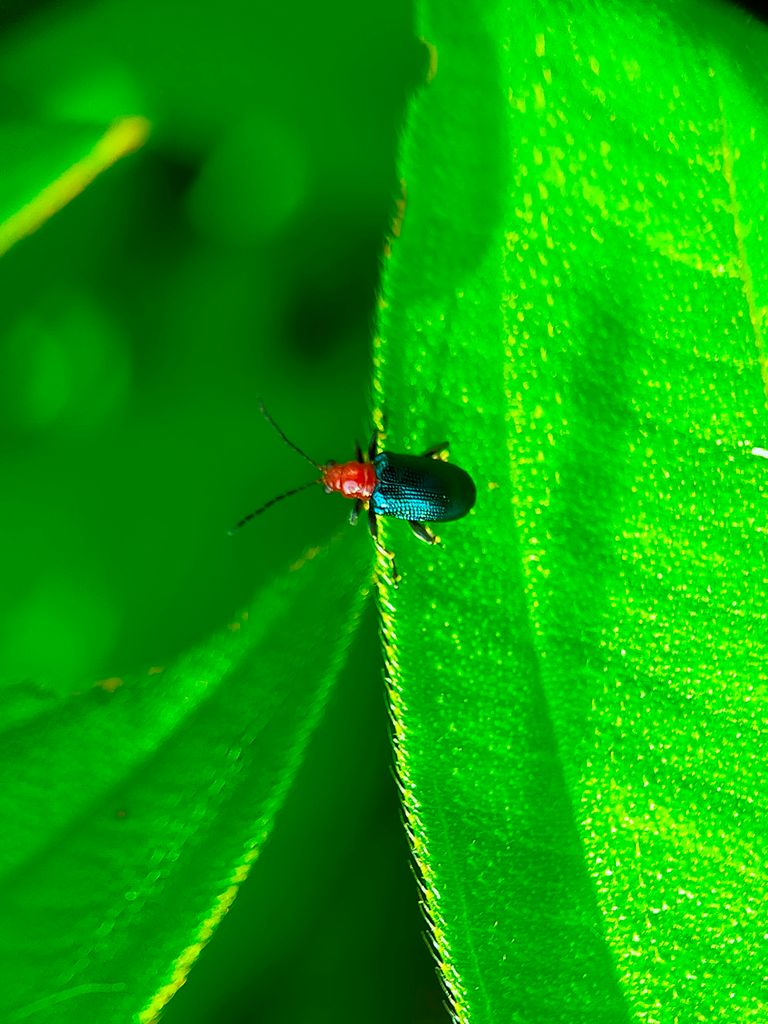
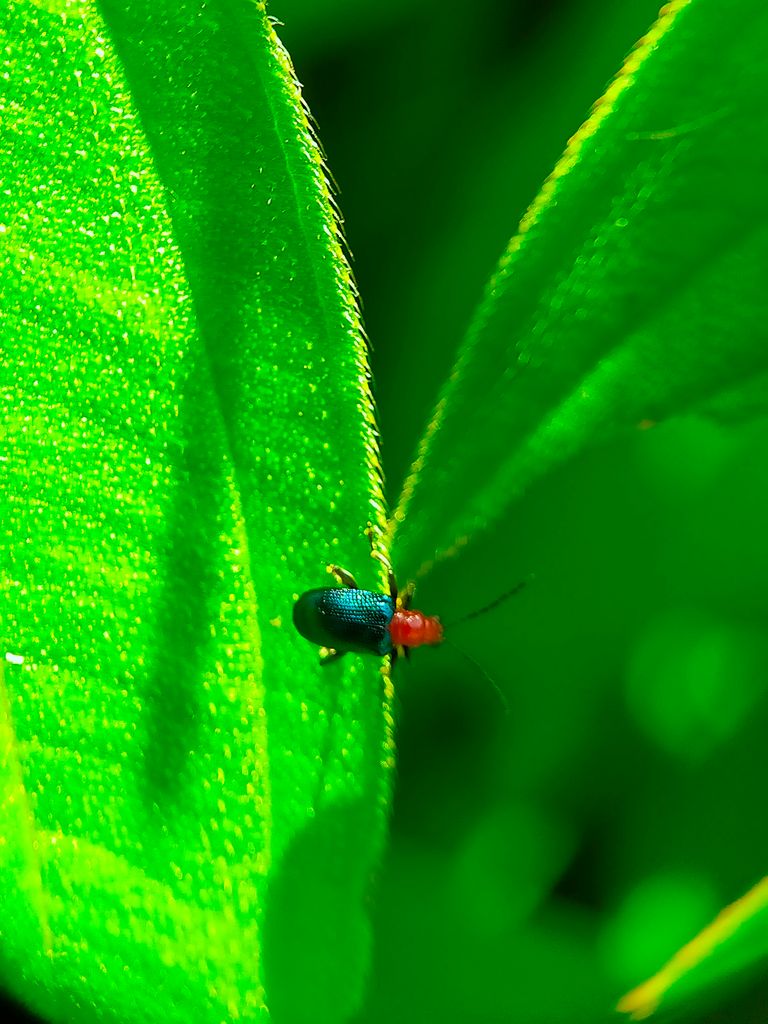
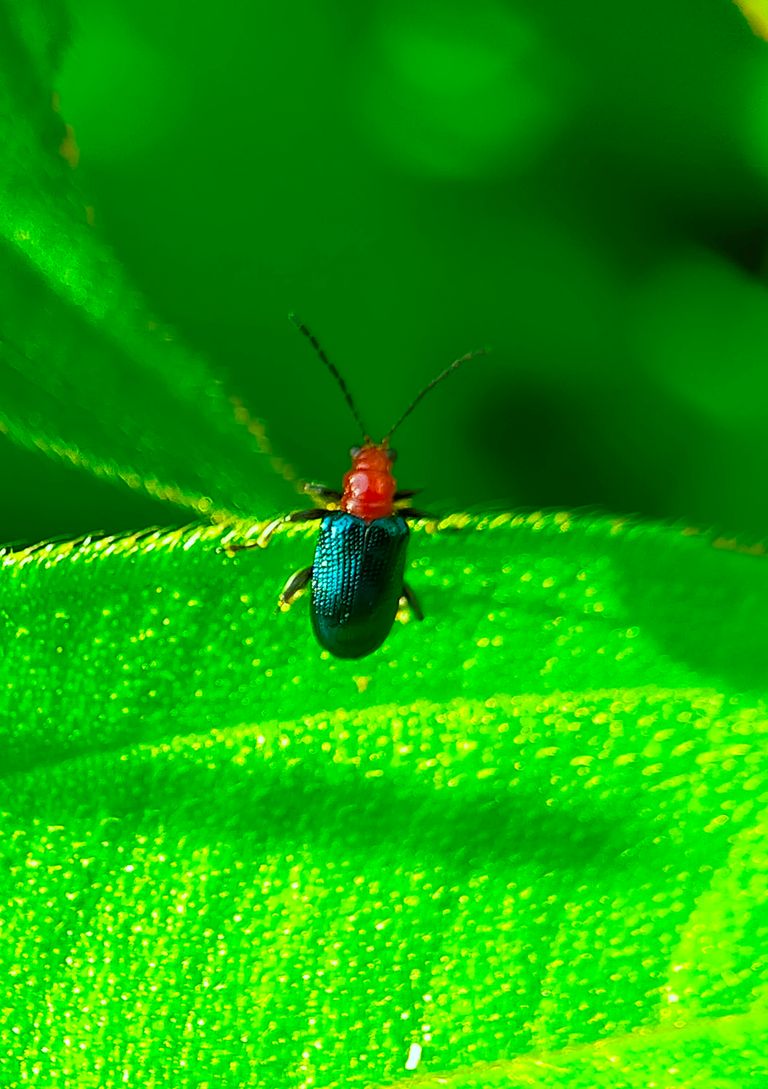


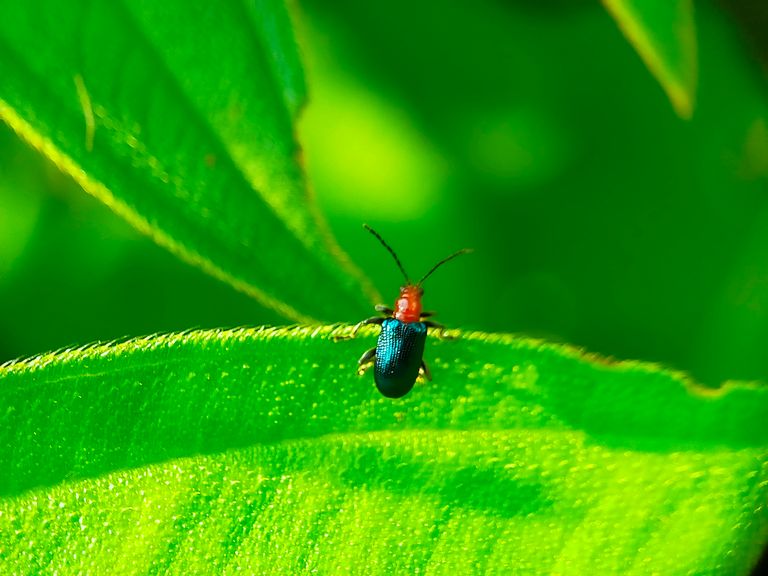
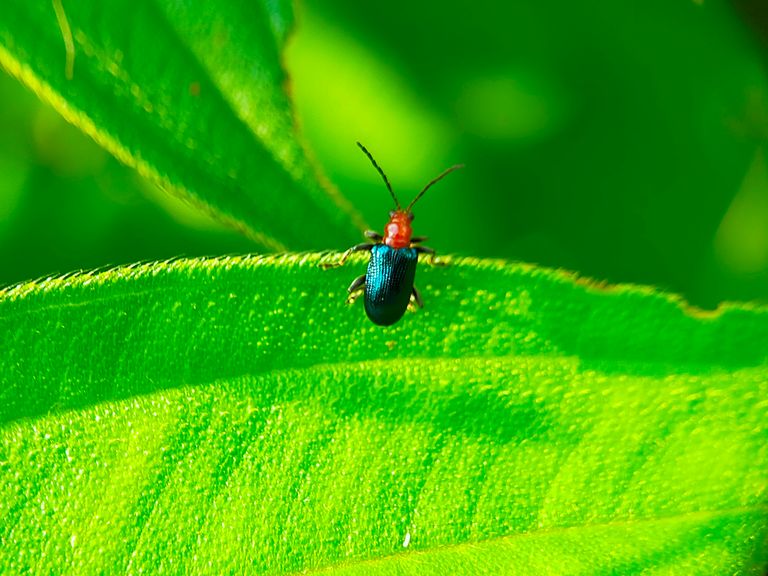
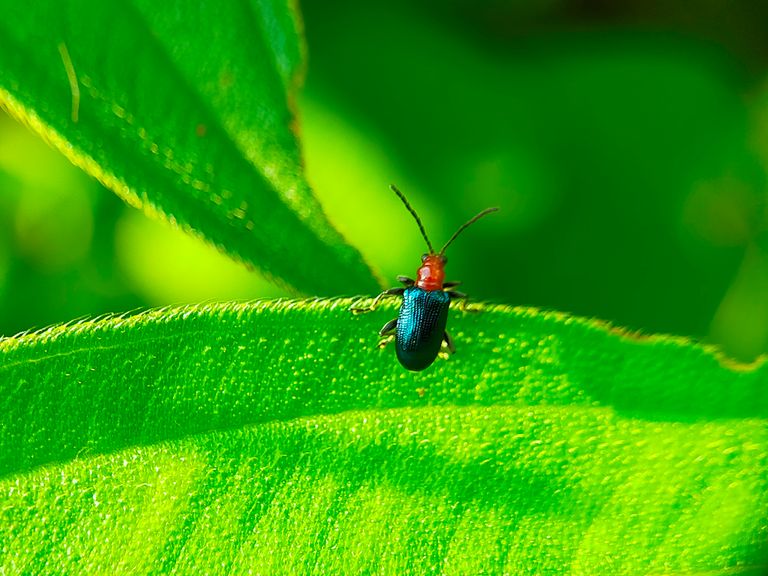
This is all I can say more and less I apologize, hopefully it will be useful for me, and hopefully it will be useful for all readers in general, thank you for visiting my blog, don't forget to follow and vote for my posts. , and one more thing, don't forget to share this post with other friends.
Thank you for visiting my blog, don't forget to follow and vote for me to post, and others don't forget to share this post with other friends.
Greetings to all on Blurtter...
** Your post has been upvoted (4.38 %) **
Curation Trail is Open!
Join Trail Here
Delegate more BP for bigger Upvote + Daily BLURT 😉
Delegate BP Here
Upvote
https://blurtblock.herokuapp.com/blurt/upvote
Thank you 🙂 @tomoyan
Congratulations, your post has been curated by @r2cornell, a curating account for @R2cornell's Discord Community.